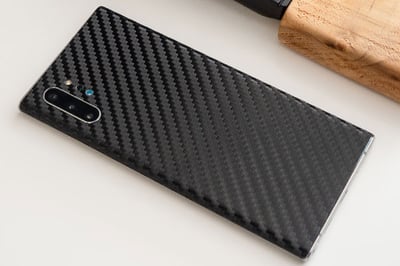Carbon Fibre Composites: The Newest Material for a Clean Economy

Lightweight and strong are two words to describe a fibre-reinforced composite material (CFRP), they are also resistant to corrosion and fatigue. A CFRP uses carbon fibre as the primary structural component, and it uses thermoresistant resins such as epoxy, polyester or vinyl ester. CFRP are strong materials and also very lightweight, it is five times stronger than steel and twice as stiff, but also lighter, making it the perfect manufacturing material for many parts. Carbon fibre is made of thin, strong crystalline filaments of carbon that is used to strengthen material. Thinner than a strand of hair, carbon fibre gets its strength when it is twisted together.
CFRP is popular in many industries, among them are aerospace, automotive, military, wind energy, and recreational applications. Industries that produce items such as drones, construction materials, robotics, tactical ladders and sporting goods are taking advantage of carbon fibre's strength and lightweight characteristics. Interestingly, musical instruments that are made using carbon fibre offer a full, rich sound and provide greater acoustic volume; they are not affected by changes in ambient conditions.
Industries and CFRP
- Aerospace: there is a big demand for airline customers for greater fuel efficiency and reduced operating costs; airframers pursue weight reduction and advanced airframe designs. As a result, demand is growing rapidly for composites manufacturing capacity sufficient to supply the increasing number of engine parts that will undergo replacement. Primary aircraft structure, wing, fuselage, and satellite bodies are made with CRFP.
- Inspection tools and machine parts: tools that are made with carbon fibre composites are 50% lighter than tools made from conventional materials, this makes them easier to handle and move.
- Civil Engineering: CFRP is increasingly used to repair and build bridges, as it has longer life span than steel and does not corrode over time. It can also be sued as a reinforced concrete to resist tensile forces and stress and to repair the operation of structural elements.
- Robotics and automated systems: automation moves faster and more precisely, motor load on equipment is reduced.
- High performance vehicles: spacecraft, jet fighters, racing cars, racing yachts and exotic sports car.
- Oil & Gas: CFRPs enable technology in deep and ultra-deep water drilling scenarios.
- Wind energy: turbine blades manufacturing need carbon fibres.
Applications of Carbon Fibres
- Physical strength, toughness, lightweight: aerospace, road and marine transport, sporting goods.
- High dimensional stability, low abrasion, low coefficient of thermal expansion: missiles, aircraft brakes, aerospace antenna, large telescopes, optical benches
- Good vibration damping, strength, and toughness: audio equipment, loudspeakers for Hi-fi equipment, pickup arms, robot arms
- Low Electrical conductivity: automobile hoods, novel tooling, bases for electronic equipment, brushes
- Biological inertness and x-ray permeability: medical applications in prostheses, surgery and x-ray equipment, implants, tendon/ligament repair
- Fatigue resistance, self-lubrication, high damping: textile machinery, general engineering
- Chemical inertness, high corrosion resistance: chemical industry, nuclear field, valves, seals, and pump components in process plants
Carbon fibre´s unique combination of low weight and high strength has helped drive the wind power revolution and has made planes for fuel efficient. The cost of manufacturing can be very expensive, but researchers are currently working on ways to reduce the cost. Although they are more expensive, they last a very long time (decades). The cost of processing composites is also being reduced through automated production lines- this will enable more carbon fibre parts to be made across all industries to a much more reasonable rate.
If you would like find out more about composites, check out our other articles at:
Machines & equipment for sale
- Surface Treatment
- Cleaning & Degreasing
- Polishing & Belt Linishing
- Mass Finishing
- Ovens & Furnaces
- Process Cooling
- Shot Blasting
- Dust & Fume Extraction
- Air Compressors
- Rectifiers & Transformers
- Miscellaneous
- Latest Stock
- Special Offers
- Direct From Site Clearances
- Auctions
- Brand New Machines
- Available Immediately
- Sell Your Machine
Machine Alert
Get the latest machines emailed directly to you as they become available to buy online. Sign Up Now

